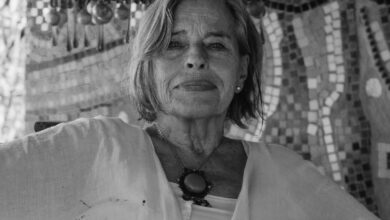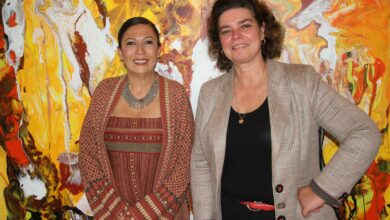A Survival Guide, currently on display at the American University in Cairo’s Sharjah Art Gallery, pinpoints the components of life in Cairo that are its difficulties while also giving it its unique character. The exhibition emphasizes the repetitive exposure to particulars of Cairene life–such as constant congestion in the streets and lack of personal space–and how the city’s inhabitants are forced to react and eventually adapt to the city’s complex choreography.
Ten artists contributed their voices, thoughts and complaints, and visitors to the gallery are encouraged to share their own experiences through interactive pieces and the guestbooks laid out at the exit of the gallery. Each artist carries his or her perspective of the overall feel of Cairo, and the way in which they choose to express this is a fair description of the role they play within the megacity’s vast community.
The resulting exhibition is an interesting mixture of media. While traveling through the gallery’s pristine space, a range of small scale paintings, illustrations and digital prints, as well as an installation, short animations and interactive websites, move the viewer from one engaging mindset to another.
Underneath the gallery’s sunlit dome floats a sphere made by Ahmed Gendy, plastered with yellow masking tape spelling the words “Imaginary Preventative Shield.” It claims its untouchable space. This installation inspires an image of one silently maneuvering through the city keeping up barriers, obsessively trying to maintain the personal space which Cairo, by its very nature, withholds from its inhabitants.
Nina El Gebaly’s “Pure Crystal Clear,” one of the first pieces to be encountered, is a selection of four large photographs, each mounted on wood. Each photograph depicts simple yet essential elements of Egyptian life, like teacups and shisha. The artist’s statement stresses the importance of these elements in Egyptian culture. She also maneuvers our thoughts towards the possibility of the masses being inveigled by politicians into blind decision-making, via these everyday objects.
She writes “Politicians having realized that, have been using symbols through election campaigns to appeal to people’s addiction, thus shaping a nation’s destiny over tea cups and coffee pots.” This heavy statement regarding the state’s political repression and its society’s passive endurance of it is followed by some relief in the form of another piece: a Skype conversation between artists Mohammed Allam and Karim Lotfy about the Cairo art scene.
Despite the artists’ awareness of Cairo’s downfalls, the sarcasm and humor they employ in comparing the art scene in Cairo to that of Beirut (where Mohammed Allam was at the time) and Amsterdam (where Lotfy was), allows one to contemplate and relate to the discussion, which is critical of Egypt but nevertheless positive.
Some pieces go further than just highlighting struggles, calling for solutions through communal development. Graphic designer Ahmed Foula, for example, investigates people’s notion of time, or lack thereof, in his interactive website. Foula’s work titled “Now” challenges the Egyptian perspective on the present, and he mentions that the “best manifestation in Arabic literature (of the concept of time) is in the use of ‘The Hour’ in the Koran in reference to the extended and infinite moment of the Judgment Day.”
Here, a computer linked to his desktop allows visitors to watch and intervene with his current commands and on-screen movements. His piece raises awareness of the value of treating time as it is in the moment, rather than as a vague estimate of a segment of the day.
On a similar note, Mohamed Abdelkarim has created an interactive blog called “30 Codes” for people to contribute photos, videos and text. The intention is to set 30 codes that define the problems faced in Cairo, like air pollution, dealing with taxi drivers, and relations between members of the opposite sex. Contributions so far include a YouTube clip on Dr Heba Kotb, a sex therapist who has become an educator for the inhibited masses who lack knowledge in marital issues due to their taboo status in Egypt.
People’s contributions create the success of the piece and highlight the strength of the community. This particular blog is open to contribution until 30 December, 2010: www.30codes.blogspot.com.
As the name of the exhibition implies, abstractions of the aggression and insecurities Cairo may cause are very evident in A Survival Guide. Each concern is expressed according to the artist’s perspective and style, from Amr Qenawi’s monotonic animation of a spider ending with a bloody attack on his prey, to Amr Thabet’s humorous yet gruesome illustrations of zombie-like characters propped with shackles, blades and religious symbols.
Others lean towards a fantasy world, a response to the mind’s escapist reaction to daily annoyances. Ibrahim Eslam’s “Space and Sci Fi” is a light take on the daily task of using public transport; in it, imaginary buses transform into unknown creatures, making a spectacle out of what should be a simple, routine part of daily life.
A Survival Guide emphasizes that Cairo has many different meanings, as well as its obvious downfalls. But the inhabitants manage to not only cope with these obstacles, they seize upon them in order to create a charm that resonates inside and outside the city limits.
Sharjah Art Gallery
AUC Center for the Arts,
AUC New Cairo
9 – 23 December, 2010




